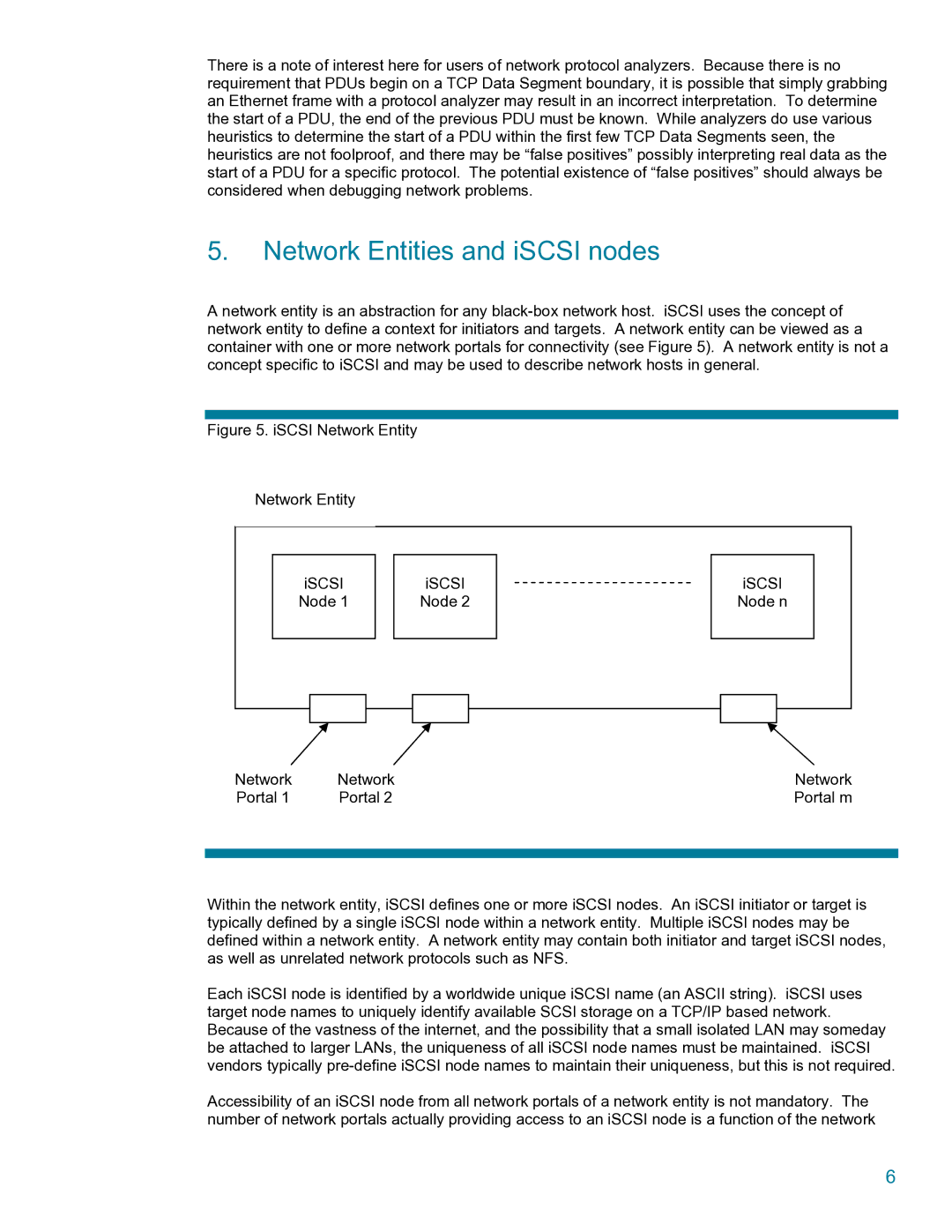
There is a note of interest here for users of network protocol analyzers. Because there is no requirement that PDUs begin on a TCP Data Segment boundary, it is possible that simply grabbing an Ethernet frame with a protocol analyzer may result in an incorrect interpretation. To determine the start of a PDU, the end of the previous PDU must be known. While analyzers do use various heuristics to determine the start of a PDU within the first few TCP Data Segments seen, the heuristics are not foolproof, and there may be “false positives” possibly interpreting real data as the start of a PDU for a specific protocol. The potential existence of “false positives” should always be considered when debugging network problems.
5.Network Entities and iSCSI nodes
A network entity is an abstraction for any
Figure 5. iSCSI Network Entity
Network Entity
iSCSI |
|
|
| iSCSI |
| ||
iSCSI |
|
|
|
| |||
| Node |
|
|
| Node 2 |
| |
Node 1 |
|
|
|
| |||
|
|
|
|
|
|
|
|
|
|
|
|
|
|
|
|
|
|
|
|
|
|
|
|
iSCSI
Node n
Network | Network | Network |
Portal 1 | Portal 2 | Portal m |
|
|
|
|
|
|
Within the network entity, iSCSI defines one or more iSCSI nodes. An iSCSI initiator or target is typically defined by a single iSCSI node within a network entity. Multiple iSCSI nodes may be defined within a network entity. A network entity may contain both initiator and target iSCSI nodes, as well as unrelated network protocols such as NFS.
Each iSCSI node is identified by a worldwide unique iSCSI name (an ASCII string). iSCSI uses target node names to uniquely identify available SCSI storage on a TCP/IP based network. Because of the vastness of the internet, and the possibility that a small isolated LAN may someday be attached to larger LANs, the uniqueness of all iSCSI node names must be maintained. iSCSI vendors typically pre-define iSCSI node names to maintain their uniqueness, but this is not required.
Accessibility of an iSCSI node from all network portals of a network entity is not mandatory. The number of network portals actually providing access to an iSCSI node is a function of the network
6
